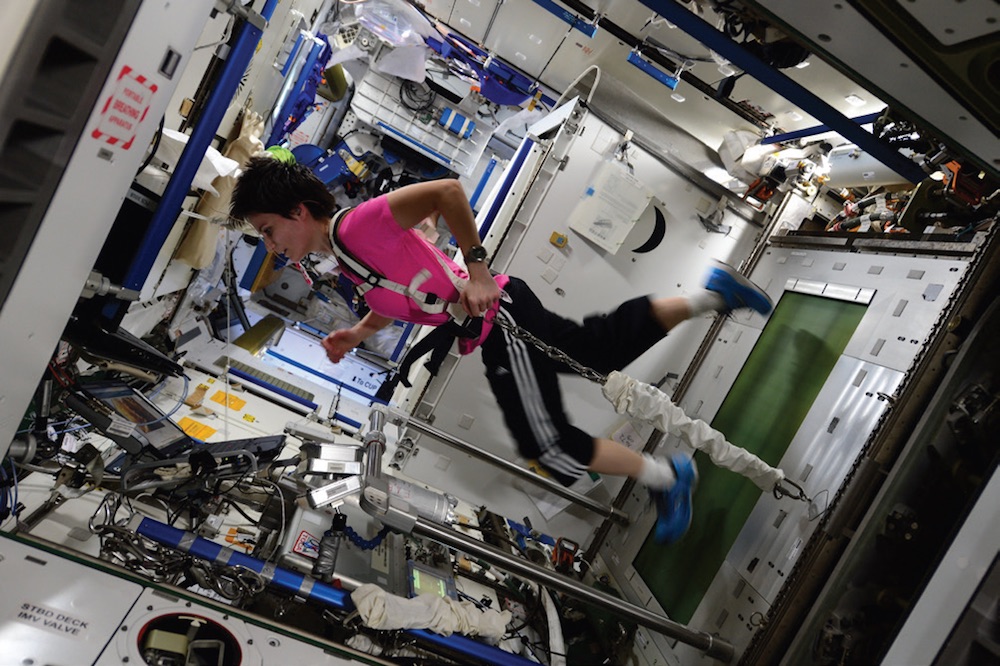Sweat is an unwanted exercise companion. Space-proven garments are inspiring innovative textiles for the gym and for those working in extreme conditions on Earth.
A warm and humid environment is an ideal scenario for bacterial, viral, and fungal super-infections. Space garments offer physical comfort like a second skin, are more hygienic and allow freedom of movement. The SpaceTex experiment assessed new fabrics to improve heat transfer and sweat management during exercise. The fabrics were chosen for their antibacterial properties. T-shirts with ultra-short drying times would be very useful to athletes but also fire fighters, mine workers and members of the armed forces. This is the first clothing physiology experiment performed in microgravity, and sportswear manufacturers are hoping to improve their products. A modified polyester has been already created for the Swiss military.
Facts and figures
- First clothing physiology experiment to be performed in microgravity
- Space garments offer physical comfort like a second skin, are more hygienic and allow freedom of movement
- All-new insights into the interaction between the body, clothing and climate in space
- The Hohenstein Institute designed and developed the SpaceTex experiment. About 50 people work on research at their headquarters in Germany. The Swiss textile manufacturer Schoeller Textil AG is also involved in this industry-funded research project
Cool it down
The lack of convection in space affects the way body heat and sweat are transported and absorbed into an astronaut’s clothing. Astronauts often report sweating more during exercise in orbit compared to Earth. Heat envelopes their bodies like an aura. ESA astronaut Alexander Gerst wore high-performance fibers on the Space Station and assessed how comfortable the clothes were in comparison to conventional cotton garments. His positive feedback coupled with the data from the experiment are helping optimise astronaut clothing for future long-term missions such as a journey to Mars planned for 2030. Textiles would have to be specially adapted for use in space – new fabrics with better thermal and sweat management need to maintain the astronauts’ cooling mechanism and reduce microbiological contamination on the spacecraft.
“This project was a perfect kick-starter to build new connections with key players in space human research and textile research.”
“People here on Earth who push the limits of their physical endurance or have to deliver peak performance in extreme conditions will benefit from the SpaceTex research.”
Download
- Clothes “made in space” (brochure, PDF)







